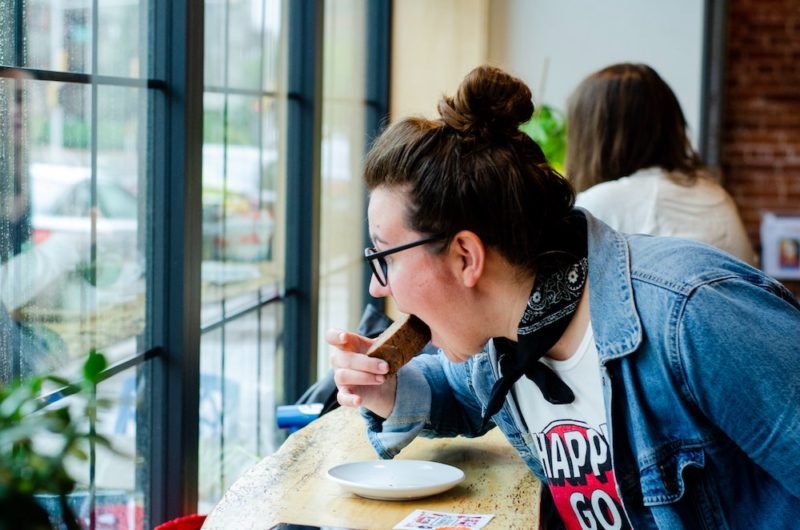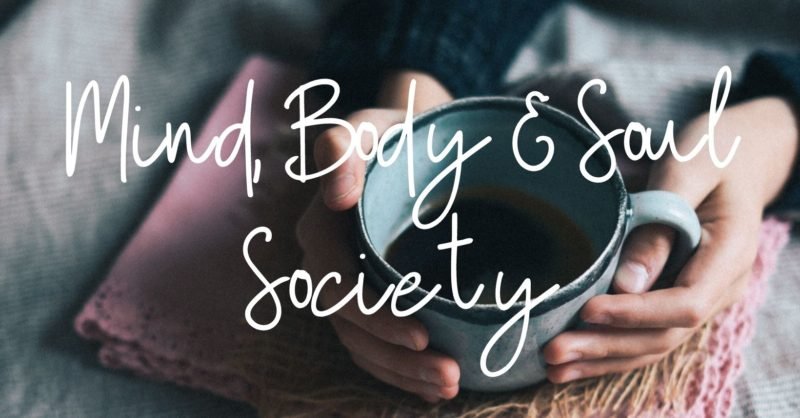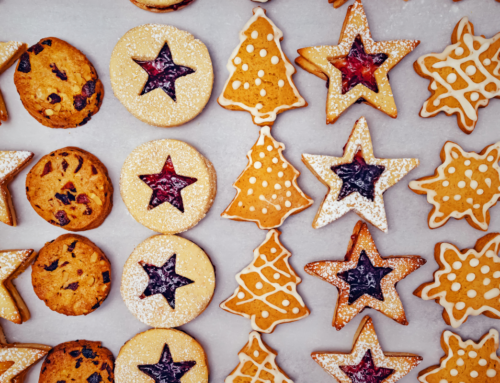
I just arrived home from the annual Food and Nutrition Conference and Expo (FNCE) in Philadelphia, aka the conference of the Academy of the Nutrition and Dietetics. I love conferences, but I especially love this one, which draws some 10,000 registered dietitians from around the country. I love it not just because I get to learn stuff, but because I get to see my RD friends who live in New York, Georgia, Los Angeles, and all points in between. (The photo above is from a reception I attended on the 59th floor of the brand new Four Seasons hotel.)
I was particularly excited for this year’s conference, not just because there were so many restaurants in Philly that I wanted to try (I made it to Zahav, Vedge and Suraya…and Evil Genius), but because there were sessions on topics near and dear to me, including eating disorders, body image…and intuitive eating.

When I first met intuitive eating
The book “Intuitive Eating,” first written in the 1990s by dietitians Evelyn Tribole and Elyse Resch, had a huge impact on me both personally and professionally when I first read it as a nutrition graduate student, even though it took me a while to fully absorb its wisdom and truth. Much as when I first read “Health At Every Size” around that same time period, my first reaction was that this was great, fabulous, fantastic for other people, but not for me—I needed to keep dieting.
Thank goodness I got over my damn self!
Are we reaching critical mass?
I did online training and professional supervision with Evelyn to become a certified intuitive eating counselor back in 2016, and have interviewed her for a handful of articles, but had never met her in person, so it was a thrill to finally meet (and hug) her. But what really rocked my world was the way she and Elyse filled a HUGE ballroom in the Pennsylvania Convention Center at 8 a.m. on Monday morning. I was sitting in the front row (!) so I didn’t catch the full scope of the scene until I was talking later to other RDs who said the room was so full that people were sitting on the floor in the back. Photos confirmed this.
Tuesday morning, I had one of those fun FNCE meetings in my hotel elevator, where the other person and I both know each other by reputation (and often social media) but have never met in person. There were hugs (we dietitians seem to be a huggy lot), she thanked me for the work I do as a writer, and I thanked her for the work she does in eating disorders (she gave a great talk the day before on binge eating disorder). We discussed the crowd at the intuitive eating session, and I said, “I think we’re finally reaching critical mass,” to which she replied, “Oh, I really hope so.” I think more and more dietitians are becoming deeply uncomfortable with witnessing the adverse effects of chronic dieting in their patients and clients.

Instincts, feelings and thoughts
The fourth edition of the book will come out in June 2020, which is exciting. “We’ve evolved with time,” Evelyn said. “We weren’t as evolved as we thought we were in that process [with the third edition, which came out in 2012].”
The authors spent time addressing some of the myths about intuitive eating. One of these myths is that intuitive eating is instinctual.
“It’s true, we can’t eat by instinct alone,” Elyse said. Relying on instinct doesn’t work for us, generally, because we’re not dinosaurs. Specifically, we have brains that are far more complex than our “reptilian brain” (more formally, the brainstem and the cerebellum). This primitive brain is pure instinct—no feelings, no thoughts, no guilt, no calculations. It isn’t under our conscious control, but it does ensure our survival by controlling our search for food. It would say to us, “You’re hungry? Just go for it!”
No, we mammals also have the limbic brain, which includes the hippocampus, the amygdala, and the hypothalamus. The limbic brain is where complex emotional and social behaviors stem from. It stores and communicates information, enhancing our “reptilian” impulses, offering us more choice. When you make a value judgement or experience a feeling or emotion, this is where it comes from.
We humans go a step further thanks to the neocortex, which gives us our intellect and ability to rationalize. It’s responsible for language, abstract thought and imagination, but it can also override our instincts and emotions—for better or for worse.
So, rather than being “eating on instinct,” what intuitive eating truly is is the dynamic interplay of instinct, emotion and thought.

Join my new Facebook group
Because there are many, many myths about intuitive eating—as well as mindful eating, body image/positivity and Health At Every Size—I’ve created a new private Facebook group, the Mind Body & Soul Society, to offer a forum to discuss these very topics. No matter where you are on your journey, just dipping your toes in or looking back in amazement at how far you’ve come, I encourage you to join!
Disclaimer: All information provided here is of a general nature and is furnished only for educational purposes. This information is not to be taken as medical or other health advice pertaining to an individual’s specific health or medical condition. You agree that the use of this information is at your own risk.
Hi, I’m Carrie Dennett, MPH, RDN, a weight-inclusive registered dietitian, nutrition therapist and body image counselor. I offer compassionate, individualized care for adults of all ages, shapes, sizes and genders who want to break free from eating disorders, disordered eating or chronic dieting. If you need to learn how to manage IBS symptoms with food, or improve your nutrition and lifestyle habits to help manage a current health concern or simply support your overall health and well-being, I help people with that, too.
Need 1-on-1 help for your nutrition, eating, or body image concerns? Schedule a free 20-minute Discovery Call to talk about how I can help you and explore if we’re a good fit! I’m in-network with Regence BCBS, FirstChoice Health and Providence Health Plan, and can bill Blue Cross and/or Blue Shield insurances in many states. If I don’t take your insurance, I can help you seek reimbursement on your own. To learn more, explore my insurance and services areas page.
Want exclusive content on nutrition, health, diet culture and more, plus critiques of nutrition and health journalism? Subscribe to my Food Noise newsletter! 📣
 Print This Post
Print This Post






